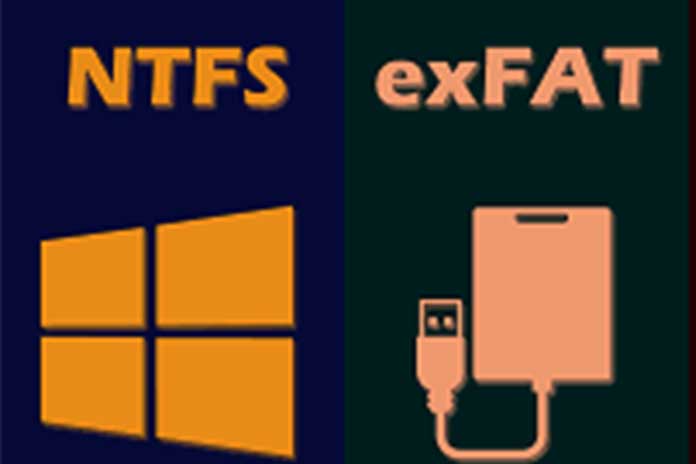The following article tells you when you should use the NTFS and exFAT file systems.
When formatting external hard drives and USB sticks, you are quickly faced with the choice between NTFS, exFAT or FAT32. These file systems are responsible for storing and retrieving your data. You can find out which file system is suitable for which purpose and what you should pay attention to.
FAT
FAT is the oldest of the file systems presented here. Other versions of it are, for example, FAT12, FAT16, FAT32 and VFAT. It is often used for USB sticks, external hard drives or digital cameras. Especially if you want to use data media outside of Windows, you should use FAT due to its good compatibility. Game consoles, for example, also have no problem with recognizing the FAT file system. However, individual files that you want to save on the data carrier must not exceed 4GB in size. A different file system should be used to save longer film clips, for example.
exFAT
exFAT or “Extended File Allocation Table” is suitable for use in flash memories, such as USB sticks and SSD hard drives. Especially if you switch back and forth between several operating systems such as Windows, Mac or Linux, and exFAT formatting of your data carrier is a good idea. There is no limit to the file size, but exFAT is also recommended for backing up smaller file sizes. Another disadvantage – especially compared to NTFS – is that you can not compress your data under exFAT.
NTFS
The NTFS (“New Technology File System”) file system offers many advantages. Four kilobytes per cluster, the smallest unit of data, means more effective hard drive performance and a reduced risk of data loss. Since Windows Vista, NTFS has been the standard file system found in the built-in hard drives. The limit of the file size is theoretically 16 terabytes. In practical terms, however, you first have to manage to create a file of this size. In contrast to FAT and exFAT, you can compress and encrypt your data under NTFS. NTFS is particularly suitable for internal or larger external hard drives that are to be used in a Windows environment.
Here Are The Differences You Should Know About exFAT vs NTFS?
| FAT | exFAT | NTFS | |
| Maximum file size | 4 GB | no limit | 16 TB |
| System recommendation | Also compatible with game consoles and DVD players | Switching between several operating systems is possible and recommended for smaller drives | Larger internal and external hard drives in a Windows environment |
| Compression | No | No | Yes |


